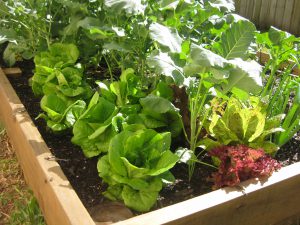 Vegetables are touted as an important ingredient for healthy diets and I have found the fresher vegetables are the better they taste. Most people don’t have issues with overeating when it comes to vegetables but freshness can greatly enhance the edibility of that essential first course. Clearly there are no fresher vegetables than those you harvest and prepare from your own backyard and September is a time to plant cool season vegetables that will produce almost into next spring.
Vegetables are touted as an important ingredient for healthy diets and I have found the fresher vegetables are the better they taste. Most people don’t have issues with overeating when it comes to vegetables but freshness can greatly enhance the edibility of that essential first course. Clearly there are no fresher vegetables than those you harvest and prepare from your own backyard and September is a time to plant cool season vegetables that will produce almost into next spring.
The list of cool season vegetables for gardens in central Florida is lengthy and includes beets, broccoli, cabbage, carrots, cauliflower, celery, Chinese cabbage, collards, endive, kohlrabi, lettuce, mustard, onions, English peas, radish, spinach and turnips. Potatoes and strawberries are also vegetables that perform during the cool season, but potatoes are planted in January and strawberries must be nursed through any nights where temperatures drop below 45°F if fruiting is to continue.
As you plan your fall garden, begin with vegetables your family likes to eat. Be sure seed or transplants are of good quality and save extra seeds as a backup for any seeds that don’t germinate. Check your feed or hardware store early for best selection.
Location of the garden is important and if this is a new garden select a site that receives a minimum of six hours of sunlight a day. Be sure the garden is well drained, on level ground and avoid low areas that may flood. Water is essential for a good garden, so locate your plot near a water source. Start with a small plot – 20 x 20 is a good starting size. If you find you need additional room the garden can always be expanded, but it doesn’t take much land to produce a substantial amount of food and large gardens are hard to take care of. Prepare a fine soil bed and break apart any clumping soils. Seeds should be planted at the proper depth, with small seeds (1/4 – ½ inch) about a quarter inch deep and large seeds (1 inch) about 1 inch deep. Give adequate space between rows (about three feet) to allow access and room for tending to your plants. Space individual plants as directed on the seed package.
Accounting for occasional rainfall, apply about ¼ inch of water daily to the fall garden. Irrigation should be applied in the morning between 5:30 and 9:00 a.m. and a regular irrigation cycle will be necessary to get plants started and to keep plants growing and producing. Check the irrigation carefully to be sure there is complete coverage.
Seventeen nutrients are essential for plant growth and while most of these will be in acceptable quantities within the natural soil, it will be necessary to supply additional nitrogen and potassium. A simple garden fertilizer, 6-2-6, applied at 5 ounces per ten feet of row, should supply the extra elements needed for good leaf color. Wait until plants emerge and are two to three inches tall to side-dress, applying the recommended amount off to the side of the row, about three inches away from the plants. Monitor your crops during the growing season and supplement fertilizer as needed when leaves are off-color. Over the years it is possible to enhance soil quality and gardeners should consider the use of organic materials – aged animal manure, leaves, composted kitchen items and cover crops – to enhance soil quality, microbial activity and nutritional content.
While weeding is greatly reduced in the fall garden, weeds are still an issue as these compete for light, nutrients, moisture and space. They also harbor insects, so their presence must be eliminated or prevented. Oak leaves make excellent mulch for spring gardens but are not available for the fall. I have found raking lawn grass during the heavy August growing season and stockpiling for use in the fall garden is a good mulch source. Choose carefully to be sure your mulch doesn’t accidently introduce additional weeds to the garden. Some gardeners elect to purchase bales of pine needles at their local garden center and these also make acceptable alternatives for garden mulch.
Gardens started by mid-September will produce vegetables that will grace the Thanksgiving and Christmas dinner tables and with proper care will provide food through the winter season. Consider the benefits of a fall vegetable garden and take advantage of the long season the central Florida climate offers.
 0
0
